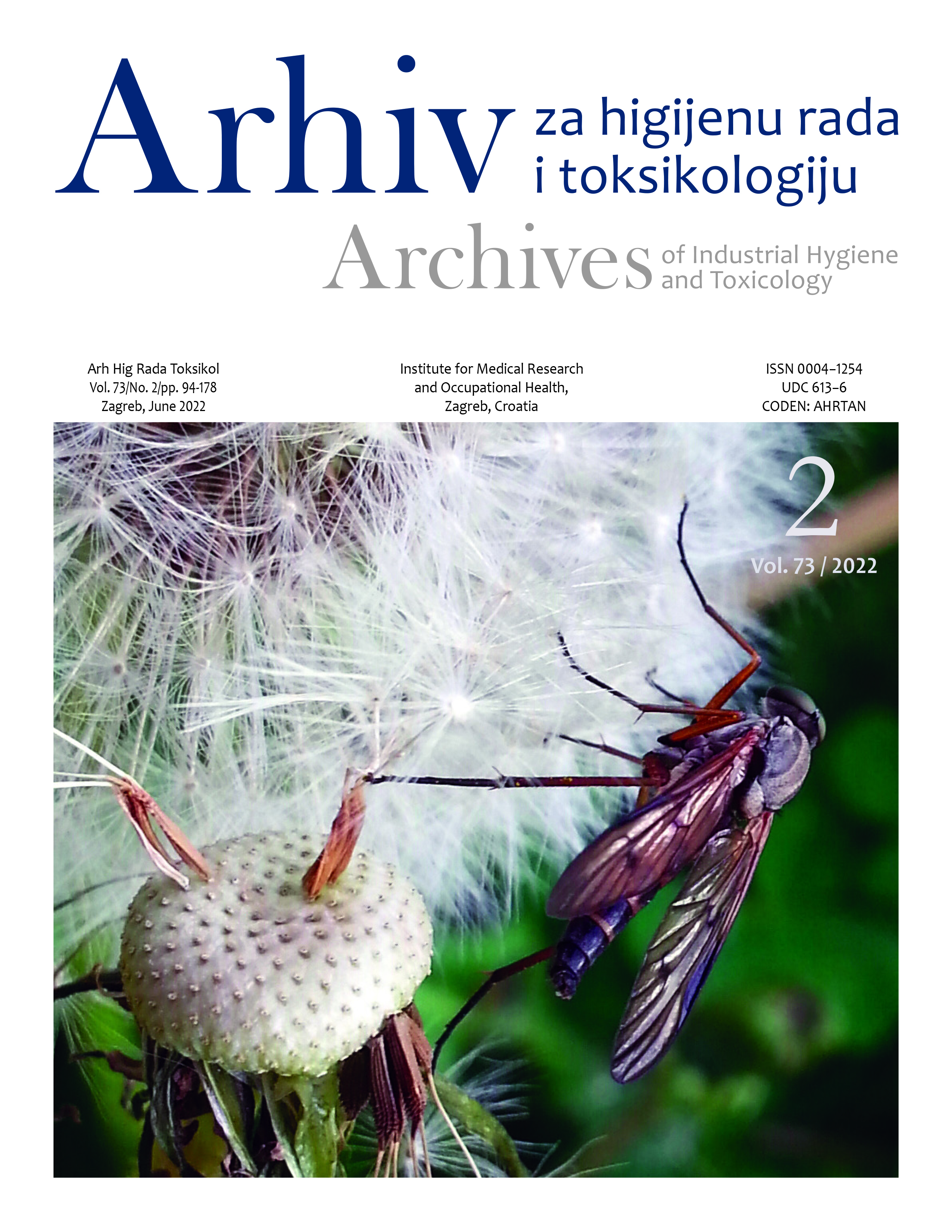Cytotoxic activity of strawberry tree (Arbutus unedo L.) honey, its extract, and homogentisic acid on CAL 27, HepG2, and Caco-2 cell lines
DOI:
https://doi.org/10.2478/aiht-2022-73-3653Keywords:
colon adenocarcinoma, hepatocellular carcinoma, phenols, human cell lines, cell viability, reactive oxygen species, tongue adenosquamous carcinomaAbstract
Strawberry tree (Arbutus unedo L.) honey (STH), also known as “bitter honey”, is a traditional medicine widely used in the Mediterranean area. Regardless of geographical origin, it usually has a very high content of phenolic compounds and strong antioxidant capacity. Yet, little is still known about the effects of STH, its phenolic extract (STHE), and its main bioactive compound – homogentisic acid (HGA) – at the cell level. The aim of this study was to estimate total phenolic content, DPPH radical scavenging activity, and ferric reducing antioxidant power of STH made in Croatia and investigate cytotoxic and pro-oxidative effects of STH, STHE and HGA on three human cell lines: tongue squamous cell carcinoma (CAL 27), hepatocellular carcinoma (HepG2), and epithelial colorectal adenocarcinoma cells (Caco-2) cells. These substances were tested at four concentrations (0.5–5× average human daily intake of STH) and over 30 min and 1 and 2 h. Croatian STH had a total phenolic content of 1.67 g gallic acid equivalents (GAE) per kg of honey, DPPH radical scavenging activity of 2.96 mmol Trolox equivalents (TE) per kg of honey, and ferric reducing antioxidant power (FRAP) of 13.5 mmol Fe2+ per kg of honey. Our results show no clear and consistent time- or concentration-dependent cytotoxicity in any of the cell lines. ROS levels in all the three cell types at almost all exposure times were not significantly higher than control. The most important observation is that the tested substances have low cytotoxicity and high biocompatibility, regardless of concentration, which is a good starting point for further research of their biological effects in other models.














